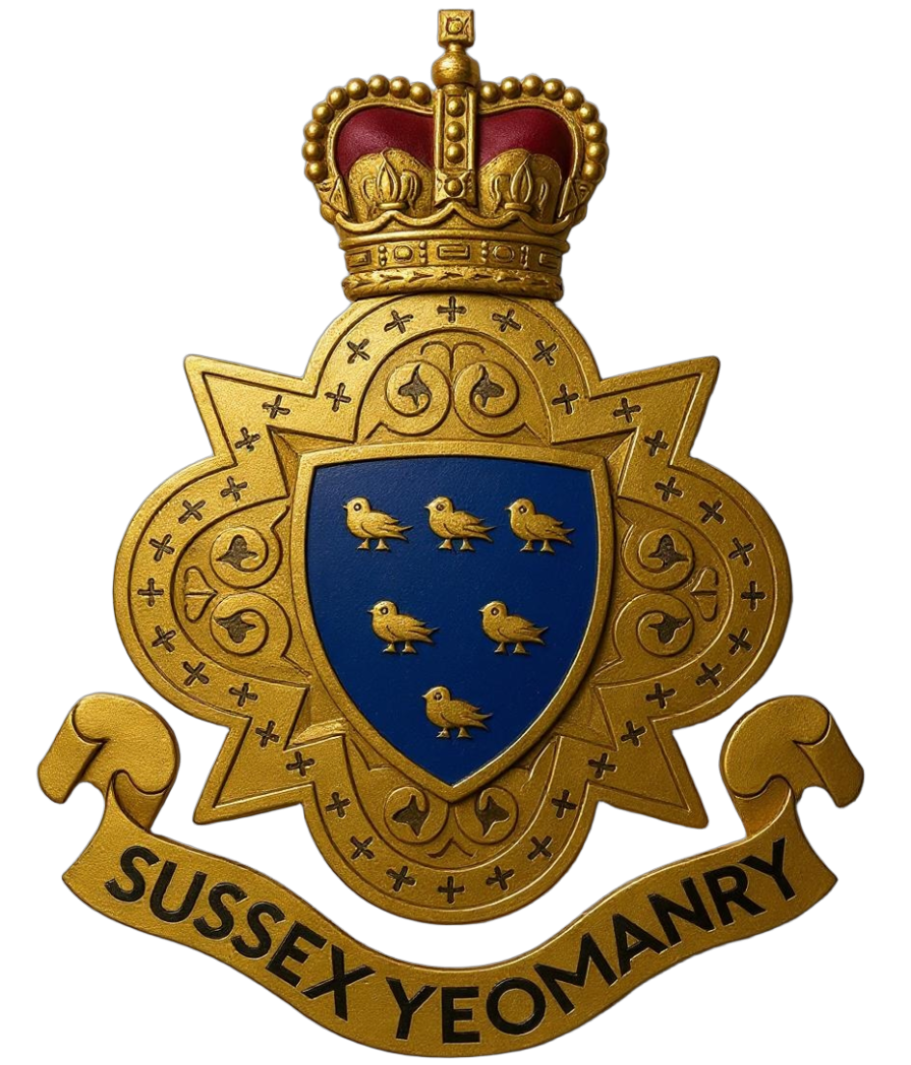Sussex Yeomanry Origins 1794
Volunteers on Horseback: Coastal Defence in the Age of Revolution
On the 21st January 1793, the revolutionary administration in Paris executed Louis XVI of France. Britain immediately expelled the French Ambassador in ‘protest’ and a week later the French responded by declaring war on Britain and the Netherlands.
This was not a meaningless threat from a militant French administration, as France was now effectively a ‘nation under arms’, directed by the dynamic military engineer, Lazare Carnot. His military reforms, which included the introduction of mass conscription were instrumental in transforming the French Revolutionary Army into an effective fighting force.
The possibility of the French making coastal raids, if not an outright invasion of southern England, was considered imminent, and within a few weeks the British government had received “a great number of letters from different persons residing chiefly along the coast opposite to France, signifying their readiness to arm themselves, in order to resist any attack which may be attempted by the Enemy.”
The London Chronicle of the 21st February 1793 reported:
“In all the counties fronting the French coast, the Gentlemen are now mounting themselves on horseback, and are determined to act as a patrole, to establish a chain of communication, and to defend their property against all attack."
The British government was fearful that the political factions who had rejoiced at the success of the French Revolution would welcome a landing by the French Citizen Army. Acute rural poverty, caused by the Industrial Revolution, was growing in many parts of Britain. Additionally, King George III, although lucid during 1793, had recently recovered from his second bout of insanity. His eldest son George (the future King George IV) was leading a blatantly extravagant existence at his Carlton House residence in London and at his new project, the ‘Marine Pavilion’ in Brighton, indulging in some of the very excesses that had contributed to the French monarch's downfall.
Existing British military forces were insufficient to prevent a determined French invasion. The Regular Army was small, with six brigades of British and Hanoverian troops being deployed into the Netherlands following the French declaration of War. The first line of Reserve was the militia. Militia service was for three years (later increased to five) and universally unpopular, as many of the ‘volunteers’ came from the more disreputable strata of society, enticed by the enlistment ‘bounty.’
Faced with this dilemma, the British Government passed a Bill in Parliament during March 1794, for
"encouraging and disciplining such corps or companies of men, who shall voluntarily enrol themselves for the defence of their counties, towns or coasts, or for the general defence of the Kingdom, during the present war."
The formation of mobile, volunteer cavalry in large numbers was deemed essential, and the Bill was swiftly passed, creating a new mounted force, generally known as the "Gentleman and Yeoman Cavalry."
(A Yeoman being a freeholder or tenant farmer, under the rank of Gentleman, but nevertheless, of a respectable standing and good character.)
County Meetings of patriotic and influential people were held for the formation and support of the Yeomanry. Recruiting was easy, and in the first year over 5,000 men quickly enrolled across 28 counties. The troopers had to provide their own horse, white leather breeches and military pattern boots. The officers, or subscriptions raised within the county, paid for the saddlery, spurs and the remainder of the uniform. The Government provided the weapons.
Sussex Troops
The county of Sussex, acutely aware of its vulnerability, having some 91 miles of coast immediately opposite and within twelve hours sail of the enemy, did not delay, quickly raising its own troops of yeomanry.
At a Sussex County Meeting, described as a
"very numerous and respectable meeting of the nobility, gentry, clergy and freeholders"
Held at the White Hart public house in Lewes on 1st May 1794, it was agreed that the Sussex Troops of Gentlemen and Yeoman Cavalry should be formed. The Lord Lieutenant of Sussex, the Duke of Richmond, (a former General, diplomat and the pre-revolution British Ambassador Extraordinary to the French Royal Court of Louis XVI), subscribed £500 (about £55,000 today), as did the Earl of Ashburton and the Earl of Egremont, soon to be appointed as the Sussex Yeomanry’s first Commanding Officer.
It was agreed that the Yeomanry should choose their own uniforms, to provide a clear distinction from the militia. The Sussex Yeomanry troops subsequently adopted dark green jackets, with black collar and cuffs, embellished with silver lace and buttons in the 1784 Light Dragoon pattern, complete with Tarleton helmet.
In most counties, the Anglo-Saxon "hundred" had evolved as the usual administrative component, but uniquely to Sussex, the hundreds were further grouped into 6 larger districts, known as ‘Rapes.’ (Not unlike the ‘Ridings’ used in Yorkshire). It was agreed that two troops of yeomanry would be formed in each Rape, one in the lower and one in the upper division. The establishment should be a captain, one or more lieutenants and 30 to 40 yeomen, including non-commissioned-officers.
By 23rd June 1794, four of the twelve proposed Sussex troops had formed. The Yeomanry List of 1797 records that the county of Sussex had eight troops of cavalry and a horse artillery troop. Four additional troops were raised the following year.
Some of the Sussex troops disbanded at the ‘Treaty of Amiens’ in March 1802, only to re-form when Britain ended the truce in May 1803. More Troop disbandments followed the declaration of ‘peace’ in 1815, as a consequence of Napoleon’s defeat at Waterloo. With the absence of modern police forces, some counties retained their yeomanry troops to assist local magistrates with enforcing public order, but in Sussex, all troops had been disbanded by 1828, when the government withdrew its funding for the yeomanry.
